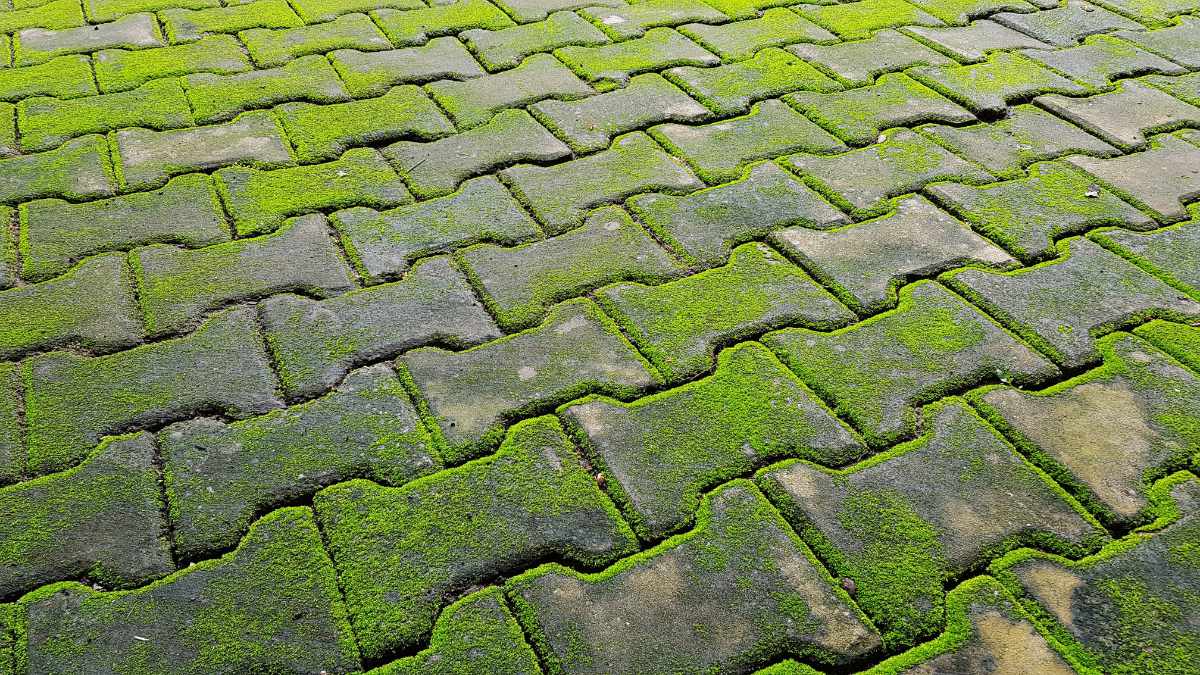Quality matters when hiring for a big project. Call a Five Star Rated professional now!
Staining a deck is a great way to enhance its natural beauty and protect it from the elements. A well-maintained deck can also increase the value of your home. However, staining a deck can be a bit overwhelming if you are not familiar with the process. In this article, we will guide you through the steps of staining a deck, from cleaning and preparing the wood to the best way to apply deck stain. We will also provide tips on how to avoid common mistakes, such as lap marks. Whether you are a first-time deck stainer or a seasoned pro, this guide will help ensure that your deck looks beautiful for years to come.
How Do You Stain a Deck?
1. Clean the Deck
Before you start staining, it’s important to clear and clean your deck. First, remove any furniture, rugs, and decor from the deck. Then, sweep it thoroughly to remove loose debris, leaves, and twigs.
Next, use a pressure washer to remove dirt, grime, and mildew. Use the appropriate nozzle and pressure setting for your deck’s surface. Also, keep the nozzle moving to avoid damaging the wood.
If you don’t have a pressure washer, use a deck cleaner solution and a stiff-bristled brush to scrub the deck. Be sure to wear gloves and eye protection. Also, avoid using cleaners with chlorine bleach because they can discolor the boards. This will make staining more difficult.
Finally, rinse the deck thoroughly with a hose to remove all traces of the cleaner or pressure washer solution. Allow the deck to dry completely before continuing. Since this can take several hours, it’s best to do it at least a day ahead of time.
2. Repair Damaged Wood
Once the deck is dry, inspect the wood carefully and look for signs of rot, warping, or splitting. For minor issues, you can cut away the rot and repair it with wood filler. However, you should replace any board with significant damage.
If you are making repairs, chisel or cut out the damage and scrub the area with a wire brush to remove debris. Apply wood filler with a putty knife and smooth it out. Let it dry before sanding it flush with the surrounding wood.
To replace rotten boards, remove the nails or screws, then tap the board free with a hammer. Cut a replacement board to match and fasten it to the deck joists with screws.
Finally, sand down rough spots or areas where the existing stain has peeled or cracked. Although rare, you may need to strip the entire deck to get a smooth finish. This is most common if the previous deck stain is really old or if the previous coat was too heavy and uneven.
3. Prepare the Area
If you made any repairs, you will need to clean the deck again. Either pressure washer the deck or scrub it deck cleaner and stiff-bristled brush. Rinse the deck with a hose and allow it to dry completely. While you could skip the initial cleaning, it’s easier to see problems in the wood on a freshly cleaned deck.
Then prepare the work area. Protect your home siding or other areas with painters tape or a large dropcloth or tarp. Pay special attention to where the deck connects to your house or is close to landscaping or pathways.
4. Stain Raised or Vertical Features
Before you stain your deck, test it in an out-of-the-way section to make sure the color looks good. Mix the stain thoroughly and then pour it into a paint tray. Apply it with either a paintbrush or a small paint pad using long, smooth strokes.
Start with the handrails, remembering to stain the undersides as well. Then stain the vertical spindles, balusters, and gates. Put less stain on the brush or pad than you think you need to prevent drips. Dab drips or pools of stain immediately for an even, consistent finish.
5. Apply the Deck Stain to the Boards
Before you start staining the deck boards, plan your path, so you don’t stain yourself into a corner. Take into account the direction of the boards as well. If possible, work in indirect sunlight to keep the stain from drying too quickly. The best time to stain is either before 11 AM or after 3 PM.
Use a paintbrush to stain the ends of the boards, pressing or dabbing the stain into the wood grain. Then use either a paint roller or pad attached to a painters pole and apply an even coat of stain to the boards. Ideally, use a roller or pad that is the exact width of one or two boards.
Always work in the same direction, using straight strokes and even pressure. Try not to overlap boards unless absolutely necessary. Avoid moving the roller in a V or W motion like you would with walls, as this can create lap marks on the boards.
6. Stain the Stairs
Lastly, stain the stairs. Start with the top step and work your way to the ground. If the steps have a solid vertical rise, stain them carefully to prevent drips or runs. If you have more than three steps, remember to stain the underside as well for a consistent look.
7. Let the Stain Dry Completely
Allow the stain to dry thoroughly before doing anything else. Read the label on your deck stain for specifics about drying and curing times. While one coat is usually enough, some products recommend applying another one.
Additionally, wait for the desk stain to cure before putting patio furniture and other items back on the deck. Typically this is between 2 and 3 days, but it could be as 7 days, depending on the stain you use.
Tips for Getting the Best Finish When Staining a Deck
Staining a deck is relatively straightforward, but it does take a reasonable commitment. If you are going to do it, follow these steps to get the best finish possible. This will reduce mistakes and ensure the new stain lasts for years to come.
- Avoid staining on a hot or sunny day. Instead, choose a cooler overcast day for the best results.
- Clean the deck thoroughly before staining. This will help to ensure that the stain adheres properly and lasts longer.
- Use a quality deck stain or sealer that is designed for outdoor use.
- Use a high-quality brush or roller with a medium nap cover for the best results.
- Apply the stain in thin, even coats and avoid using too much in one area.
- Work quickly but carefully to maintain a wet edge and prevent lap marks.
- Allow the stain to dry completely before applying a second coat.
- Allow the stain to cure completely before walking on the deck or moving furniture back on it.
How Do You Avoid Lap Marks When Staining Your Deck?
Lap marks are streaks of deeper color or heavier gloss or shine that happen when wet and dry layers of stain overlap. The best way to avoid them is to work quickly but carefully, so the stain remains wet during application.
Here are some tips to maintain a wet edge and prevent lap marks when staining a deck:
- Start staining in a corner and work your way out, this will help you to keep track of the sections you have already stained and to avoid going over already stained areas.
- Keep a wet edge by continuing to stain as you go, this will prevent the stain from drying too quickly in one area and creating a lap mark.
- Use a brush, roller, or sprayer to apply the stain. A brush is the most recommended way to apply the stain evenly, but a roller or sprayer can also be used.
- Apply the stain evenly and in thin coats, avoid applying too much stain in one area.
- Use a brush or roller with a medium nap cover for the best results.
Frequently Asked Questions About How To Stain a Deck
What Type of Deck Stain Should I Use?
This depends on the type of look you want to achieve and the level of protection you want for your deck. There are several types of deck stains available, including transparent, semi-transparent, semi-solid, and solid. Transparent and semi-transparent stains allow the natural grain of the wood to show through, while semi-solid and solid stains provide more coverage and color.
How Often Should I Stain My Deck?
The frequency of staining depends on the type of stain and the level of exposure to the elements. Generally, a deck should be re-stained every 1-3 years, depending on the level of sun, rain, and foot traffic it receives.
Can I Stain My Deck in the Sun?
It’s best to avoid staining a deck in direct sunlight, as the heat can cause the stain to dry too quickly, leaving a uneven finish. It’s best to choose a cooler, overcast day to stain your deck.
Can I Stain a New Deck?
It’s best to wait at least 6 months before staining a new deck to allow the wood to dry and settle. This will ensure that the stain is absorbed evenly and effectively.
Can I Use a Pressure Washer To Clean My Deck Before Staining?
Yes, a pressure washer can be used to clean a deck before staining. However, be sure to use a low-pressure setting and a fan tip nozzle to avoid damaging the wood.
Do I Need To Sand My Deck Before Staining?
Sanding the deck before staining is recommended to create a smooth and even surface for better absorption of the stain. Be sure to use a fine-grit sandpaper and remove any dust or debris before staining.
Do You Need To Seal a Deck After Staining?
It depends on the type of stain used and the level of protection desired for the deck. Some deck stains contain sealers and will provide adequate protection on their own, while others may require an additional sealant for added protection.
If you’re using a semi-transparent or clear stain, it’s generally recommended to apply a sealant to protect the wood from water and UV damage. Additionally, if the deck is exposed to heavy foot traffic or outdoor elements, it may be beneficial to apply a sealant for added durability. It’s always best to check the label on your stain to see if the manufacturer recommends a seal coat.

 Top Categories
Top Categories













